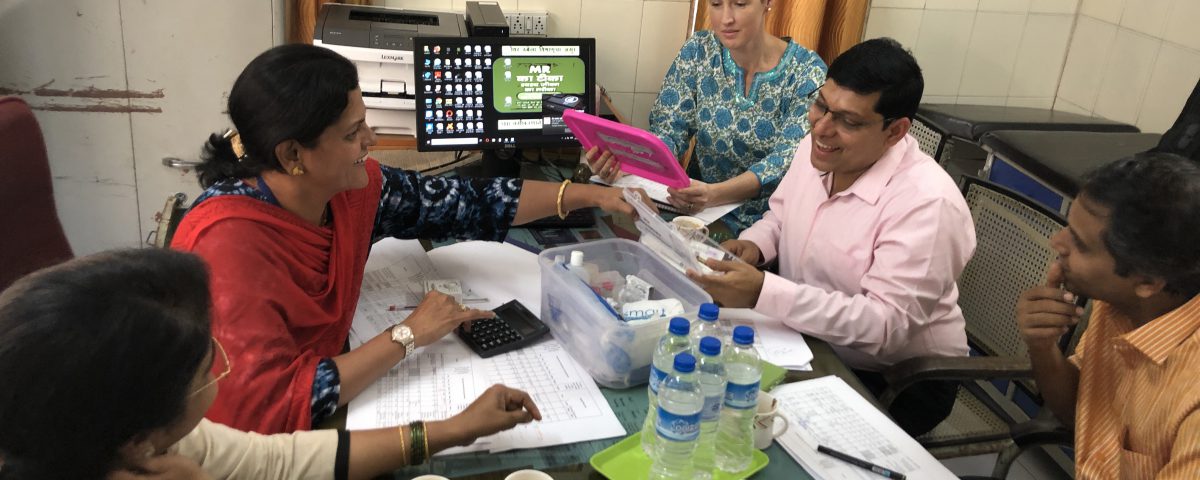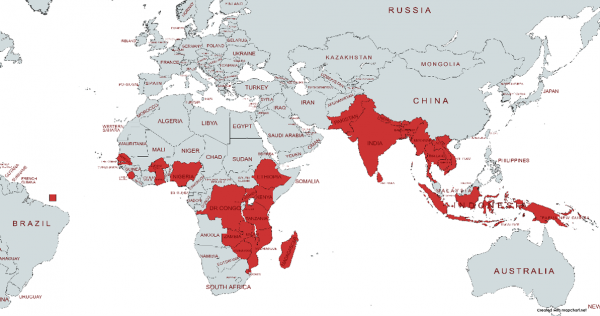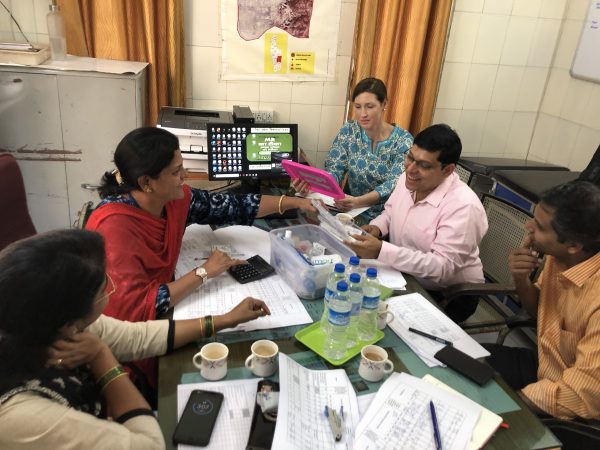The benefit of vaccines often focuses on health and societal benefits, highlighting the prevention of disease, disability, and death, as well as Sustainable Development Goals such as enabling the continuation of work and education, reducing poverty, uplifting economies, and achieving gender equality, among others. At IVI, our core capabilities include the discovery, development, and delivery of vaccines to achieve those SDGs, and a critical component of our work includes conducting and sharing health economics research to make the investment case for vaccines and to support critical decision-making on their purchase and use.
Health economics to support vaccine development, introduction, and policy action
Health economics to support vaccine development, introduction, and policy action

Collection of typhoid conjugate vaccine delivery costs for a campaign conducted in Navi-Mumbai, India
“Vaccines save lives—and they need financial investment for development, and political buy-in for use in national programs.”
—Dr. Vittal Mogasale, Head of Policy & Economic Research at IVI
Learn more about Policy & Economic Research (PER) at IVI
with Vittal Mogasale, MBBS, Ph.D., Head of PER
The PER department is currently implementing 18 projects in 28 different countries, primarily in Asia and Africa, including a few with global outreach. The department is independently leading five projects and executing the rest in collaboration with other departments of IVI.

How do cost-of-illness studies tie into IVI’s mission to make safe, effective, and affordable vaccines available for global health?
The cost of illness (COI) studies provide a wealth of information on economic costs borne by the heath system and families affected by the disease, including the loss of income related to the inability to work due to illness. The COI studies help in reasoning the economic burden that is averted from vaccination. This information is also used in cost-effectiveness analysis to understand the value for money of vaccination programs. These are some of the evidence used in making policies and introduction of vaccines.
What are some examples of project designs that incorporate health economics research as well as epidemiological or vaccine effectiveness studies?
Several health economic studies are an integral part of other IVI studies. For example, cholera, typhoid, schistosomiasis, iNTS COI studies use the same platform as surveillance or vaccine effectiveness studies. The vaccine delivery cost estimation and cost-effectiveness analysis are conducted along with vaccination programs such as the typhoid conjugate vaccine campaign in India, cholera outbreak response in Mozambique or Nepal and single-dose HPV demonstration project in Thailand. The full value of vaccine analysis (FVVA) studies generates evidence that supports the development of vaccines such as iNTS vaccines and group A streptococcus vaccines.
What kind of data are most useful to support vaccine policy and introduction in a national immunization program?
The vaccine introduction decision at the country level is complex and determined by multiple factors, making it difficult to understand and navigate. When it comes to evidence-based decisions, epidemiological factors (e.g., disease burden), vaccine safety and efficacy/effectiveness, and value for money are critical. Health economic studies provide value for money evidence. Factors such as finance, operational aspects, vaccine availability, health system capacity, policy makers’ perceptions, and political commitments are other essential factors driving vaccine introduction decisions.

Linking the ‘technical’ with the ‘social’ to drive policy and advocacy
Regional AMR Data Sharing and Analysis Virtual Workshop
In addition to conducting cost-of-illness studies, vaccine delivery costing, and vaccine cost-effectiveness analyses, IVI’s PER team launched the RADAAR project, focusing specifically on policy, planning, and advocacy for antimicrobial resistance (AMR) prevention and control, identifying the barriers and enablers for sharing data to inform and drive AMR policymaking.
After conducting 59 in-depth key informant interviews (KIIs) across 6 countries in Asia and Africa, and another 26 with regional/global key stakeholders and AMR experts, followed by an online survey with 205 individual respondents from 22 Fleming Fund priority countries, the RADAAR team noted several key insights:
-
Despite technical constraints and limited resources in developing countries, slow but steady progress is underway to improve the volume and quality of AMR data
-
Some countries lacked the capacities and skills for data analysis and visualization, which help make a compelling case for AMR policymakers. Even with data, they were not strategically leveraged.
-
A One Health perspective, supported by multi-sectoral coordination, was steering the beginnings of a “whole-of-government” approach, though not as far as a “whole-of-society” response, which AMR demands
-
Most countries will likely follow the AMR Global Action Plan (GAP) as a framework for their National Action Plans, but the GAP may not be as useful of a framework for low- and middle-income countries
-
National, regional, and global AMR stakeholders expressed a need for step-by-step guidelines on using AMR data
With these insights, the RADAAR team is organizing a series of AMR data-sharing and analysis workshops to strengthen capacities and create a demand for One Health AMR/AMU/AMC data sharing and analyses to inform and improve regional policymaking, advocacy, and response.
The first workshop for the South Asia (SA) region was successfully conducted in early June 2021. Representatives from Bangladesh, Bhutan, Nepal, Pakistan, and Sri Lanka participated in the SA workshop, including country-level stakeholders and regional/global experts as well as IVI’s consortium partners – the Public Health Surveillance Group, the Brigham and Women’s Hospital, and the University of Oxford’s Big Data Institute.

Presentations ranged in topic from the genomics behind the emergence and spread of AMR to the unique challenges faced by low- and middle-income countries in AMR policymaking. The workshop also served as a forum to discuss the inclusion and prioritization of different types of data and approaches to effective data-sharing and analysis. This workshop is a valuable step toward two goals:
-
Creating a draft regional framework for AMR data-sharing and analysis with the inputs and perspectives of multisectoral participants
-
Co-developing a unique AMR policy advocacy guidance and tools to strengthen the capacities of LMICs to translate data and evidence into compelling policy pitches
The data workshop for the Africa region will take place from June 29-July 1, and the workshop for the Southeast Asia region will be from July 13-15.
Learn more about RADAAR here.


